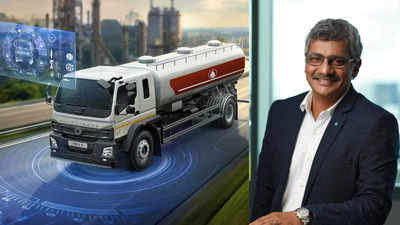
India’s Commercial Vehicle market is set to reach 8,50,600 units in 2024, with an expected annual growth rate of 1.88 percent, pushing sales to 933,400 units by 2029 – a report from Statista said. Production is projected to hit 1,018,000 units by then, reflecting the market’s expanding capacity. As Daimler Truck Innovation Centre India (DTICI), a key player in the CV innovation space, continues to contribute in the steadily growing segment, its MD & CEO, Raghavendra Vaidya, spoke about the company’s efforts to advance green mobility, harness AI, and tackle challenges in India’s automotive landscape.
When asked about DTICI’s core objectives, Vaidya highlighted its role within Daimler’s global network. “We are one of the largest development centres for Daimler trucks outside Germany, based in Bengaluru. Our focus is on product engineering and IT, working to advance zero-emission technologies and connectivity,” he explained. Vaidya highlighted two main objectives: “intelligence to drive,” which focuses on intelligent software solutions, and “power to drive,” aimed at the shift from diesel to zero-emission powertrains.
AI, ADAS in the CV sector: Innovation and challenges
Artificial Intelligence plays a vital role in enhancing Daimler’s ADAS, Vaidya noted. “AI powers the comfort and safety features in our ADAS systems, such as adaptive cruise control and active brake assist,” he said. “At Level 2 autonomy, our trucks use a range of sensors and intelligent cameras to classify objects, ensuring precise decision-making on the road.” Vaidya further remarked that the adoption of ADAS, particularly in the CV segment, is lagging despite the technology gaining traction in other segments such as PVs.
New Mercedes-Benz E-Class Review: SUVs failed to beat this sedan | TOI Auto
He further explained the role of data in improving these systems: “We process massive amounts of sensor data to refine control algorithms, making sure our systems are always learning and improving.”
India’s roads come with a host of challenges for automation. However, he seemed optimistic about the demand as he said, “Automated driving in India is complex due to the diverse road conditions and infrastructure. But with improved highways, there’s a growing demand for safer vehicles, and we are working to integrate active safety systems into our trucks to meet that demand.”